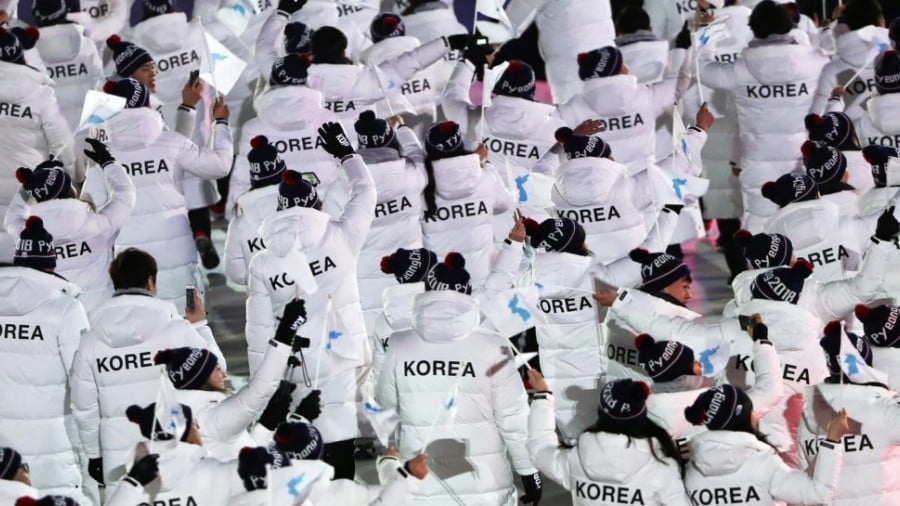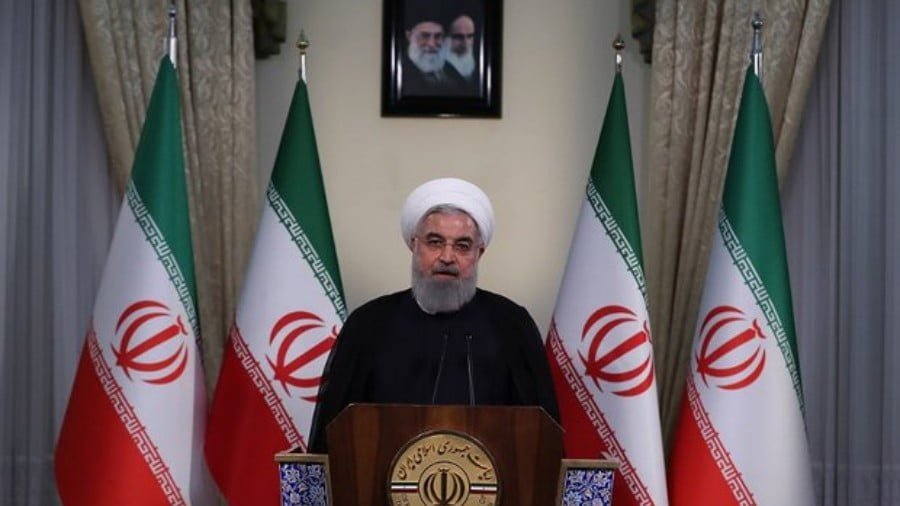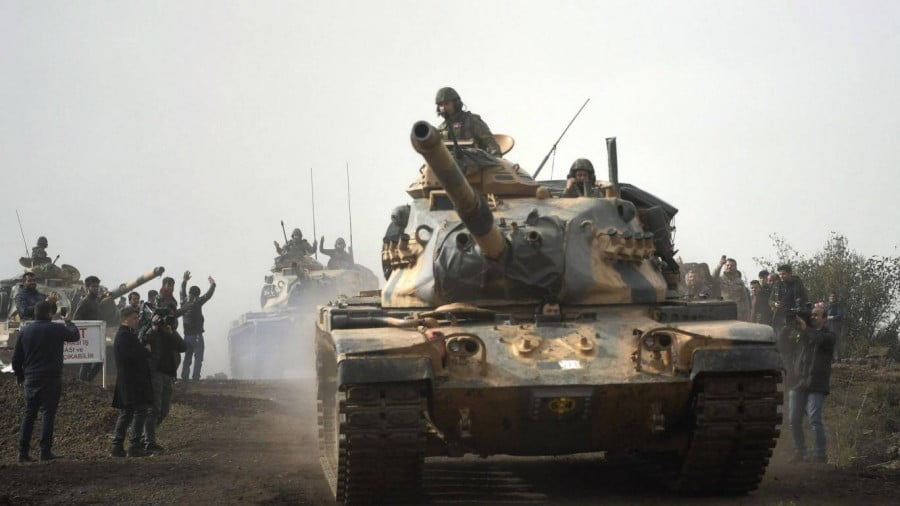Imagining a Korean Peace Treaty and Its Implications
A Korean Peace Treaty might finally be on the horizon after over six decades of a tense armistice, and while it’s possible for a unified Korea to function as a pivotal Silk Road hub, there are also certain Hybrid War pitfalls that it must take care to avoid as well.
A high-level South Korean security advisor announced that his country was seriously exploring the possibility of agreeing to a Korean Peace Treaty with the North in exchange for Pyongyang “denuclearizing”, the understanding of which the official surprisingly said “does not vary from country to country (because) the way we, the United States and North Korea see denuclearization is the same.” This is a major declaration in and of itself because it had hitherto been thought that the US and North Korea’s views on this issue were drastically different, in that Washington demanded that the North give up its nuclear weapons without any preconditions while Pyongyang insisted that the Pentagon fully withdraw from the South as a prerequisite to this happening.
Prospects For Peace
For the first time since the Korean Armistice Agreement, it looks like peace might finally prevail on the peninsula, especially considering that Trump plans to meet with Kim Jong-Un in the next month or two and also revealed that talks are presently ongoing between both sides at “a little bit short of the highest level”. Furthermore, it was just reported that CIA chief and Secretary of State of nominee Mike Pompeo paid a secret visit to North Korea at the beginning of the month in order to organize the upcoming meeting between the two heads of state, demonstrating that this is indeed a very serious process and not something superficial that was hyped up by Trump like some voices in the Mainstream Media have been suspecting.
While it’s impossible to know exactly what might be agreed upon if a Korean Peace Treaty is eventually signed, it’s possible to make educated inferences about its content and the implications of this prospective move based on the information that’s already known so far, as well as the incorporation of some sensible speculation in order to “fill in the gaps” and attempt to form a clearer vision of the potential future. This thought exercise is valuable because it could provide a glimpse of what Northeast Asia’s geopolitical situation might be like in the coming years, thus helping governments and the general population better prepare for the resultant scenarios that could either help or hinder their interests.
“Confederating” The Koreas
Going by what’s been revealed thus far and assuming that the information is accurate and will more or less be implemented in practice, then there’s a distinct possibility that the US might actually withdraw from the Korean Peninsula or dramatically scale down its presence there in order to satisfy North Korea’s security requirements for giving up its nuclear weapons. This could then prompt the phased opening of borders between the two Koreas, with its “soft” iteration of Seoul-based financial investment preceding its “hard” form of physically allowing the relatively free movement of goods and people. Concurrent with this, efforts might be made to “confederate” the Koreas and draft a “unitary” constitution that mandates military neutrality, though also allowing extremely broad-based autonomy for both and therefore resulting in only nominally unified institutions like those in Bosnia.
The Big Bargain
Both the US and North Korea would have their respective reasons for agreeing to this arrangement. The Pentagon might realize that its interests can be sustained for much less than it’s paying now if it keeps the then-“confederated” region of South Korea under its nuclear umbrella after withdrawing or dramatically scaling down its troop commitment. The wars of the future will be fought much more differently than the ones of the past and large-standing armies like the American one in South Korea and the theoretical post-war occupation of North Korea that the US is planning for might never happen at all. Instead, robots, missiles, cyberattacks, and terrorism are what it will end up relying on in the coming years, thus meaning that no strategic edge would be lost through this scenario.
As for North Korea, it can only be speculated upon, but it appears as though something must have happened behind the scenes sometime since the beginning of Trump’s presidency to convince it to possibly abandon its nuclear program. Pyongyang knew how serious the US President was about potentially nuking it if “need” be, but the only thing that held him back was the nearly quarter of a million Americans living in South Korea who would have to be sacrificed if that happened. Nevertheless, some sort of “shadow war” might have been waged through tactical strike teams and targeted assassinations, or maybe even the demonstration or threat of a new military technology, to have brought North Korea to the denuclearization bargaining table given its previous refusal to do so without the US first withdrawing from the South.
Win-Win…
Regardless of how any Korean Peace Treaty comes about, it would undoubtedly be beneficial for both Koreas. The North would become one of the most competitive areas in the world given its mostly untapped rare earth mineral deposits and low-wage labor situated right in the middle of the “world’s factory” of Northeast Asia. In addition, the onset of a formal peace could finally allow Russia to pioneer a “Korean Corridor” for connecting the two peninsular states to the Trans-Siberian Railway and thenceforth to the EU marketplace via a unimodal mainland route and/or link the countries up with a prospective “Tikhito Tiksi” corridor in connecting the region with the Arctic Ocean’s Northern Sea Route as part of a cheaper multimodal path to Europe. China could also get involved in this too and turn the Korean Peninsula into a significant Silk Road hub.
…Or Zero-Sum?
That said, there are also “zero-sum” considerations that might come into play as well, the most prominent being that a “too competitive” Korea could take away from the investment attractiveness of the Russian Far East and possibly diminish China’s existing marketplace dominance in North Korea. Another factor to keep an eye on is the gradual inflow of American influence via trading and cultural mechanisms that will inevitably enter the communist country and could possibly lead to pernicious political consequences just like it did in Eastern Europe and the USSR during the late 1980s.
Relatedly, North Korea will be pressed to reform its rigid and outdated communist system as it slowly enters the globalized world, but the long-term systemic consequences of this careful recalibration might be unpredictable and inadvertently catalyze uncontrollable reactions in society. Any unrest or destabilization in a nominally “confederated” Korea could be taken advantage of by the South and its US military patron to either delay the withdrawal or drawdown of American personnel and/or threaten to redeploy them in the North, which could suddenly destroy whatever peacemaking gains were already made.
“Known Unknowns”
None of the aforementioned win-win or zero-sum scenarios are possible unless a Korean Peace Treaty is first promulgated and the two Koreas fully normalize relations with one another, a seemingly herculean diplomatic process that could easily be offset by several factors:
* The relevant parties returning to having separate understandings of what “denuclearization” entails;
* The US refusing to adequately meet North Korea’s security demands through a full withdrawal or large-scale drawdown;
* A disagreement between the Koreas over what one of the possible deal-making compromises of “military neutrality” would actually mean in practice (largely pertinent to the American military presence and South Korea’s mutual defense treaty with the US);
* Differing visions for how a phased “confederalization” and the gradual “opening up” of North Korea to South Korea and then the rest of the world would play out;
* North Korea’s “ideological flexibility” to its inevitable systemic transformation under these described circumstances and its leadership’s sincere commitment to this;
* and the disruptive influence of hostile elements of the American “deep state” to the Korean peace process.
Concluding Thoughts
There’s no telling whether next week’s Panmunjom Summit between the North and South Korean leaders will actually yield any tangible progress on a Korean Peace Treaty, nor whether the upcoming Trump-Kim one will either, but this long-stalemated process has nevertheless been infused with a new momentum over the past month ever since the American President announced his wiliness to unprecedentedly meet with his communist counterpart. The signals that all sides are giving indicate that something positive might really be afoot, hence the relevance in conducting this thought exercise about the possibility of a Korean Peace Treaty and its consequent implications.
While a superficial analysis would suggest that this is a win-win outcome for everyone, that might not necessarily be the case if this eventuality actually transpires because of the chance that North Korea might be internally destabilized with time just like the former Soviet satellites of Eastern Europe and even the USSR itself were in the late 1980s On the other hand, if a unified Korea becomes “too independent” and “too successful”, then it might develop into its own center of power in in the emerging Multipolar World Order, which isn’t necessarily a “bad” thing but could become troublesome if it’s pressured into aligning with the US.
All told, it’s impossible for anyone to know the exact odds of reaching a Korean Peace Treaty in the first place or the full impact that its geopolitical consequences could have if it’s ever implemented, but broadening one’s thought horizons by imagining the most realistic possibilities of both allows people to get a clearer vision of the potential future. Moreover, the insight that various scenario forecasts yield can prompt excited brainstorming discussions that help experts narrow down the most likely possibilities of what could actually happen, thus helping the Great Powers and their populations get a more accurate sense of what they should prepare for should this monumental event come to pass.







